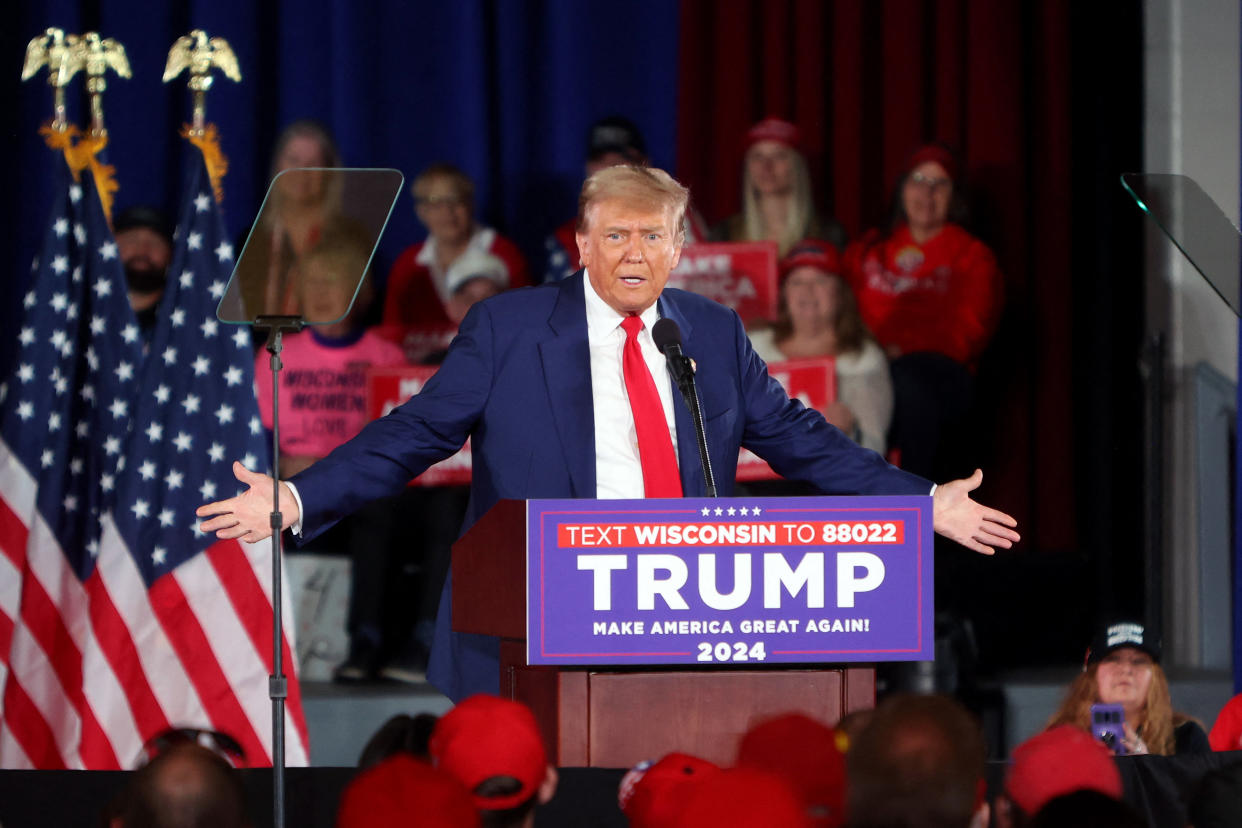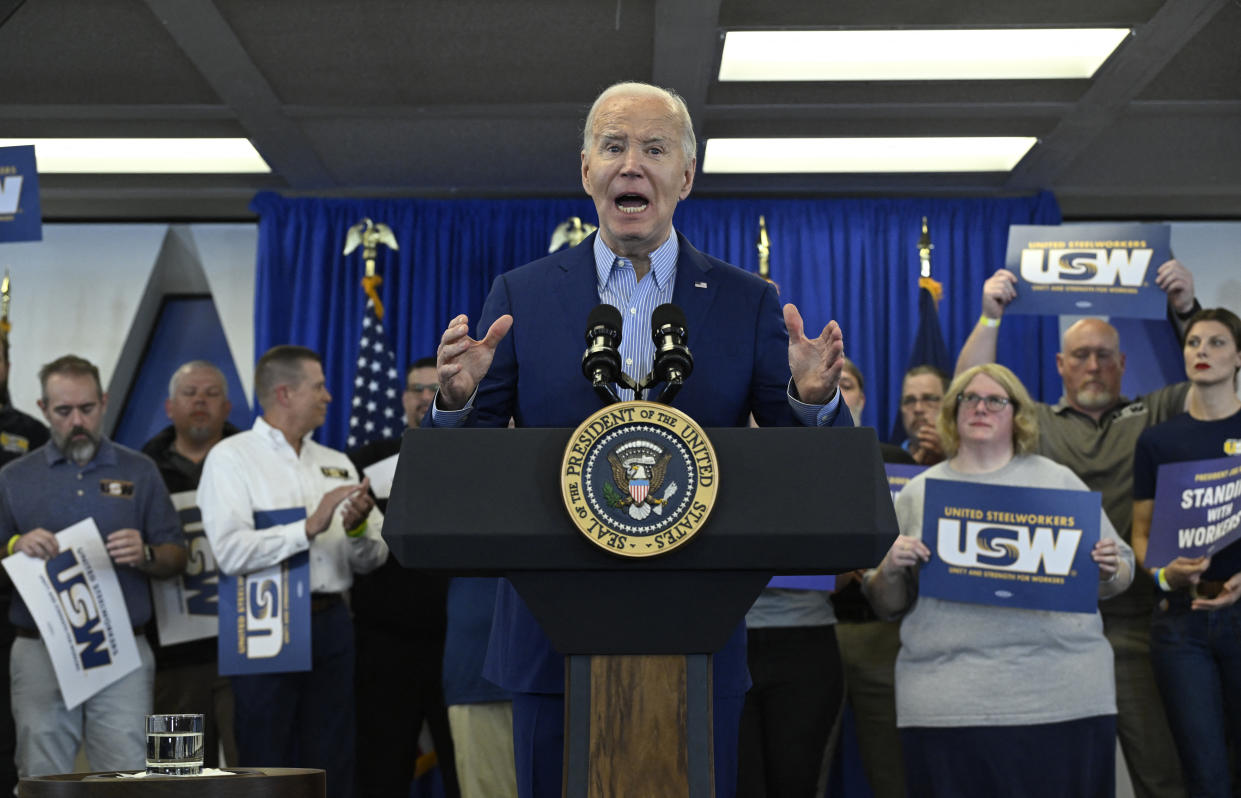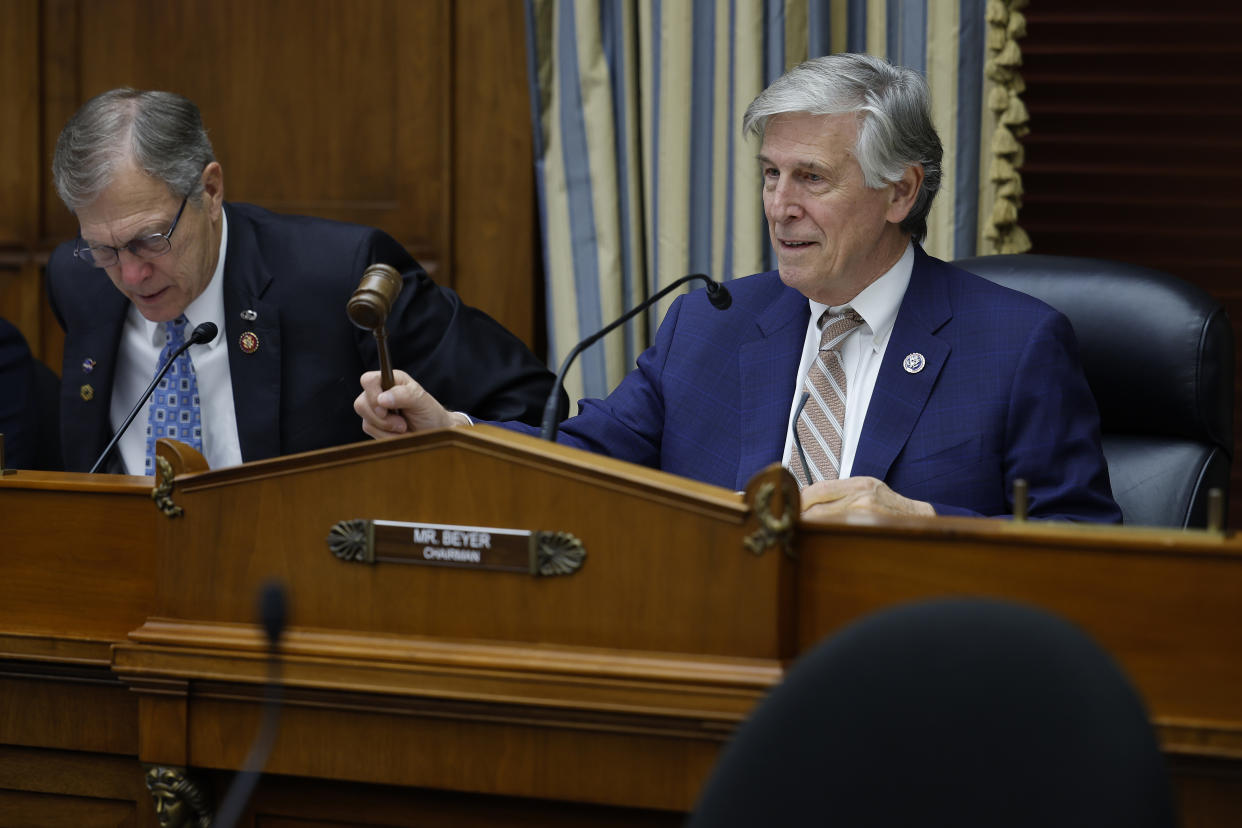Trump wants to levy his new tariff regime 'quickly.' Here's how long it might take.
Donald Trump has made new tariffs a centerpiece of his potential second-term economic agenda, and he could try to force them into existence much more rapidly than many might be expecting.
His allies are exploring an array of legally untested and potentially disruptive options that experts say could prove to be a second destabilizing force for global markets on top of the duties themselves.
What the former president wants to do "quickly" is push up tariff levels to heights not seen in recent history. He could spur new inflation with plans to implement up to 60% duties on many Chinese goods and 10% levels on other major trading partners.
"It may be more than that," Trump added on how high things could go in a recent interview with Time.
Whether he actually tries to implement duties that high and how long it takes before companies start paying them at US ports of entry may come down to how aggressively Trump seeks to act among his other possible priorities if he wins.
Trump's history with the issue suggests he could try to be bold.
"If he's looking for an immediate jolt, ... it could be this," noted William Reinsch. The longtime trade policymaker added in a recent interview that tariffs have long been appealing to Trump as an area uniquely open to unilateral action.
"Plus, he's got a thing about trade, he always has," Reinsch added, who is now at the Center for Strategic and International Studies.

Three 'quick strike' tariff options
It is Congress that formally — per the US Constitution — has the power to "lay and collect Taxes, Duties, Imposts and Excises." But lawmakers have ceded much of that power to the Oval Office in a series of bills that stretch back decades.
That history gives a potentially victorious Trump a wide array of options.
Perhaps the most rapid route is an authority granted to the president under a 1977 law called the International Emergency Economic Powers Act, which allows the president to declare an economic emergency and act accordingly.
If Trump were to go that route, Reinsch said, he could act quickly, but "he would almost certainly be sued by somebody."
In that scenario, the key question is likely to become whether a judge would be inclined to issue an injunction to stop the tariffs or let them go into effect while the court case plays out.
A second potential quick strike option is Section 338 of the Tariff Act of 1930.
Two lawyers at Covington & Burling LLP highlighted this "long forgotten" presidential power in 2016, noting that it grants the president "substantial albeit qualified powers" to impose tariffs on countries the White House feels have discriminated against the US.
What is notable is that both options have already been discussed in Trump's circles.
Robert Lighthizer was Trump's trade representative last time around and appears to be in line for another top job if Trump wins. He cited both of these authorities in a recent New York Times interview, saying Trump would have "clear authority" under those two laws due to the size of the trade deficit.
Another recent essay from Peter Navarro, the former director of Trump's Trade Council, argued that tariffs should be viewed as a national security issue and that all authorities available should be used to "increase tariff levels that will block out 'Made in China' products."
Navarro may be unlikely to be involved in a second Trump administration as he is currently serving a four-month prison sentence for contempt of Congress, but the essay was included in a potentially influential recent book that aims to be a "comprehensive policy guide" for Trump or for the next conservative administration.
Megan Hogan is a research fellow at the Peterson Institute for International Economics who has spent recent months studying Trump's potential trade options.
She noted that the broad powers in these laws are tempting because they could be enacted quickly and also because they could allow Trump to implement higher tariff levels.
"I think the reason why he's trying these other laws is because his new trade agenda this time around is much more ambitious," she said, drawing a comparison with 2016. Other options entail limitations on the size of duties a president can impose and other restrictions.
Hogan also mentioned yet another untested presidential power to watch if Trump wins: the Trading with the Enemy Act of 1917.
That law was focused on intellectual property after World War I but is still in force and something a second Trump White House could seize on as an authority.
Three slower — but more legally tested — options
There are other options that Trump could also use. These more familiar presidential authorities are ones that both Trump and President Biden have invoked in recent years, but they can take months to play out.
One option is national security tariff authority under Section 232 of the Trade Expansion Act of 1962. There's also Section 301 of the Trade Act of 1974, which gives the president the power to levy tariffs for a wider array of reasons.
The specifics of those two options differ, but both require more formal investigations by the Department of Commerce before the duties can go into place.
In his own recent move to call for a potential tripling of steel tariffs on China, Biden leaned primarily on Section 301 authority but cited Section 232 authority as well.

Trump's China tariffs were also enacted under Section 301 authority, with an investigation beginning in August 2017 and concluding over a year into his presidency in March 2018.
Likewise, Trump's 2018 plan for a 25% tariff on imported steel came under Section 232 authority and took months and months before coming into force.
The slowest option — but one that could be most immune to lawsuits — would be for Trump to formally consult Congress.
Lighthizer has floated this as an option, but Trump's approach to trade has long spurred opposition from lawmakers in both parties.
Would Congress step in?
Another question hanging in the air is whether Congress might look to step in to claw back some of its authority if Trump wins.
Rep. Don Beyer, a Democrat of Virginia, is not a fan of Trump's approach to trade and has long pushed an effort to rein in some of the president's unilateral tariff authority.
He acknowledged in an interview that much of the political will for his effort among Democrats has "diminished" in recent years and, from his perspective, "we are definitely in the trade doldrums."
Nonetheless, Capitol Hill is populated by tariff-skeptical lawmakers from both parties. Republicans helped mount an ultimately unsuccessful effort during Trump's last term to roll back some of the president's authority around Section 232 tariffs.
"Reforming Section 232 is not about President Trump," Sen. Chuck Grassley, the Iowa Republican, said at the time. "Congress has been too negligent in the past of protecting our constitutional responsibility."

The current effort from Rep. Beyer has seen little progress in recent years and, for the moment, is only focused on Section 232 tariffs and not the wider suite of presidential trade authorities.
This is, as Beyer put it, to be "on the realistic side," but he remains hopeful that Congress could look to act in the coming years even if there is currently little to no chance of Congress addressing the issue before November's election.
He noted that a Trump win could be "very motivating to have Congress do our best to assert our rightful authority."
Ben Werschkul is Washington correspondent for Yahoo Finance.
Click here for politics news related to business and money
Read the latest financial and business news from Yahoo Finance
